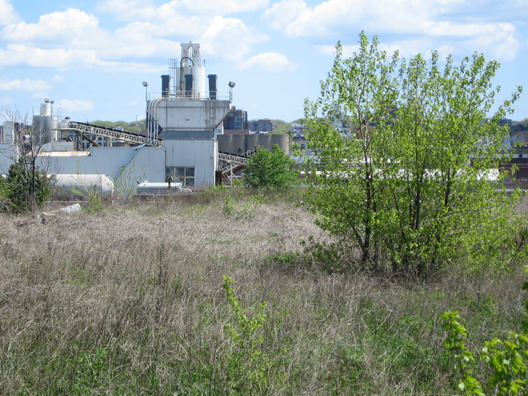
The Department of Housing Preservation and Development announced this morning that it is taking RFPs from developers interested in building on the extremely polluted Public Place site in Gowanus. Public Place will be a mixed-use development that will include at least 400 units of mixed-income housing, commercial space, community facilities and open space, including landscaped areas on the shores of the Gowanus. (You can read the release fr
 om HPD by clicking here.) The RFP, which we looked at, clocks in at 143 pages and contains a lot of detail both about specifications for the project and about the environmental challenges on the site. You might recall the site was home to a Manufactured Gas Plant. The facility left a wide range of toxins up to 150 deep on the site. A full cleanup has been rejected as too expensive (up to $699 million) and technically difficult. The likely cleanup will partly remove the toxins then cap the site and use other techniques to capture coal tar and other substances. The cost estimates run from $62.3 million to $105 million. The cleanup is supposed to start next summer and take two year. After it’s done, construction can take place. The RFP does not include a big, privately-owned warehouse on the site. More detail from the RFP tomorrow.
om HPD by clicking here.) The RFP, which we looked at, clocks in at 143 pages and contains a lot of detail both about specifications for the project and about the environmental challenges on the site. You might recall the site was home to a Manufactured Gas Plant. The facility left a wide range of toxins up to 150 deep on the site. A full cleanup has been rejected as too expensive (up to $699 million) and technically difficult. The likely cleanup will partly remove the toxins then cap the site and use other techniques to capture coal tar and other substances. The cost estimates run from $62.3 million to $105 million. The cleanup is supposed to start next summer and take two year. After it’s done, construction can take place. The RFP does not include a big, privately-owned warehouse on the site. More detail from the RFP tomorrow.
BONUS: Brownstoner attended the event protesting architect Robert Scarano at the Department of Buildings and has a full report, plus photo.

1 response so far ↓
1 Anonymous // Jul 18, 2007 at 6:30 am
Can someone please tell me if toxicology test results on poor Sludgie the Whale’s necropsy are available? I wonder if there were any types of bacteria, diseases, and/or chemical pollutants found in his body as a result of visiting our fair waters? Given the interest in the poor little guy and how many people are boating in that water, I would’ve thought that the information would have been broadcasted! I also wonder if along with the less costly version of the cleanup and the subsequent development of the public place site, if there are any plans to include some type of water treatment facility.Without that,how could anyone expect the raw sewage which is consistently pushed into the canal each time it rains, from re-contaminating the area? And is it not logical, that some 400 proposed units will place an even greater strain on our water and sewage needs and capacity? Where do I go to find out what and when infrastructure improvements are planned for our booming area?
————curious citizen